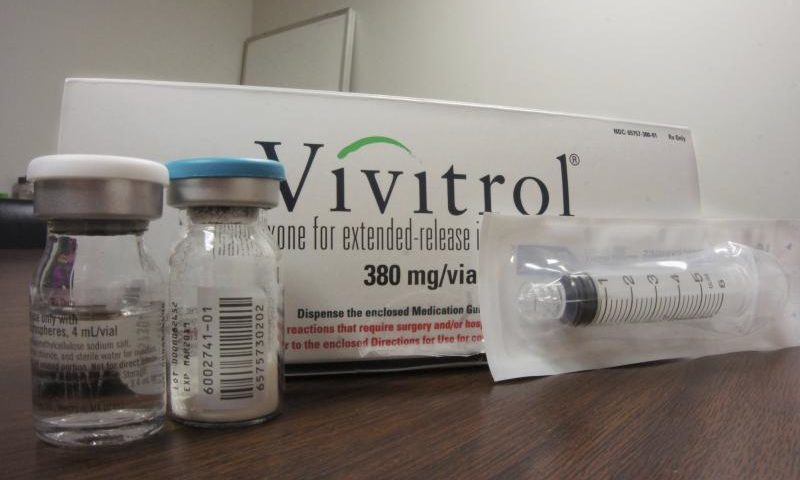A handful of states are experimenting with a monthly injection that could help addicted inmates stay clean after they are released from prison. Proponents of the injection point to a few successful field trials, while skeptics question its effectiveness long-term, as well as its $1,000 per shot price point.
Vivitrol, also known as extended-release naltrexone, is currently being used in prison systems in Illinois, Vermont, Wyoming and Wisconsin on a small scale, the Associated Press reports. Michigan is also offering the drug to parolees who commit small crimes if addiction is the reason for their new offense. The Federal Bureau of Prisons ran a successful field trial in Texas, which it plans to expand next year.
The active ingredient in Vivitrol—naltrexone—attaches to specific opioid receptors in the brain to block the pleasurable feelings that come with a high. Vivitrol is not habit-forming and has no street value. There are only two other FDA-approved medications currently on the market for alcohol and opioid dependence—methadone and buprenorphine—and both are habit-forming, can be abused and can be used as part of a drug deal.
To date, the largest study on the effectiveness of Vivitrol was completed this year by New York University professor Joshua Lee. In conjunction with five sites in the Northeast, 308 addicts in the criminal justice system agreed to participate. Of them, 153 were assigned to Vivitrol as treatment, while the other 155 were assigned to the usual treatment, which consists of counseling and referrals for community treatment programs.
Those receiving Vivitrol would get injections every four weeks for 6 months, and have scheduled visits every two weeks. Those on the usual treatment path also had scheduled visits every two weeks.
During the 24-week treatment phase, the time to relapse was significantly longer in the extended-release naltrexone group than in the usual-treatment group: 10.5 weeks versus 5.0 weeks. A relapse event was detected in 66 participants assigned to extended-release naltrexone (43 percent) as compared with 99 assigned to usual treatment (64 percent).
However—and this is where experts start to disagree—once the injections stopped, many that had not relapsed while on Vivitrol previously, did so then.
“The prevention of opioid use by extended-release naltrexone did not persist through follow-up at week 52 and week 78, approximately six months and 12 months, respectively, after the treatment phase had ended,” the paper, published in the New England Journal of Medicine, reads. “In addition, we did not detect a benefit of extended-release naltrexone on several important secondary outcomes, including rates of cocaine, heavy alcohol, and injection-drug use. Rates of self-reported reincarceration and days of incarceration through week 27 were also not significantly lower in the extended-release naltrexone group than in the usual-treatment group.”
Still, as the opioid epidemic in America worsens to affect more than 2 million people, and prisons become more and more crowded, advocates say additional research should be done.
“It does suggest that six months wasn’t enough,” Lee told the Associated Press.

